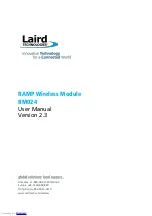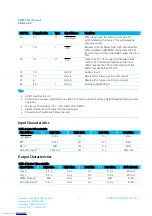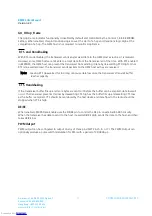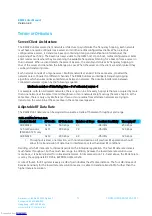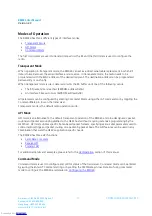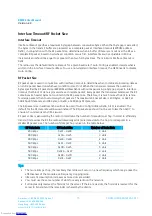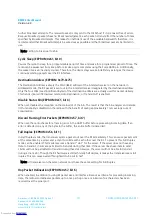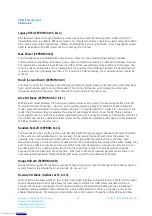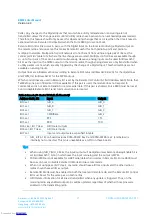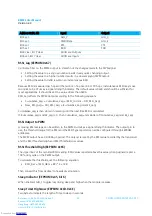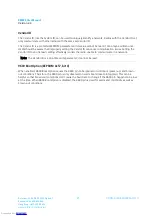
RM024 User Manual
Version 2.3
Americas: +1-800-492-2320 Option 2
Europe: +44-1628-858-940
Hong Kong: +852-2923-0610
www.lairdtech.com/wireless
10
CONN-GUIDE-RAMP24-0413
H
ARDWARE
I
NTERFACE
Pin Descriptions
RXD and TXD
The RM024 accepts 3.3 VDC TTL level asynchronous serial data from the OEM Host via the RXD pin. Data is
sent from the transceiver, at 3.3 V levels, to the OEM Host via the TXD pin. Pins should be left floating or
high when not in use. Leaving the RXD tied low results in the radio transmitting garbage serial data across
the RF.
Force 9600 /Sleep Interrupt
When pulled logic Low before applying power or resetting, the transceiver’s serial interface is forced to 9600,
8-N-1 (8 data bits, No parity, 1 stop bit): regardless of actual EEPROM setting. The interface timeout is also
set to 3 ms and the RF packet size is set to the default size for the selected RF data rate. To exit, the
transceiver must be reset or power-cycled with Test pin logic high or disconnected.
When enabled in the EEPROM, 9600 Boot Option causes the 9600 pin to be ignored on cold boot (power-
up), command boot (0xCC 0xFF) and brown-out conditions. Therefore, the 9600 pin is only observed on
warm boots (reset pin toggled). This can be helpful so that brown-out conditions don’t cause the baud rate
to change if the 9600 pin happens to be low at the time. When 9600 Boot Option is disabled, the 9600 pin is
used for all boot conditions. 9600 Boot Option is enabled by default.
Force 9600 is also used to wake the radio from sleep. When the pin is taken low, the radio wakes. The
transceiver does not sleep if the pin is low when the sleep command is issued.
Note: Because this pin disables some modes of operation, it should not be permanently pulled low
during normal operation.
µP_RESET
µP_Reset provides a direct connection to the reset pin on the RM024 microprocessor and is used to force a
hard reset. For a valid reset, reset must be asserted Low for an absolute minimum of 250 ns.
Command/Data
When logic High, the transceiver interprets incoming serial data as transmit data to be sent to other
transceivers. When logic Low, the transceiver interprets incoming serial data as command data. When logic
Low, data packets from the radio are not transmitted over the RF interface, however, incoming packets from
other radios are still received. Enabling CMD/Data RX Disable in the EEPROM causes incoming RF packets to
be queued by the receiving radio while CMD/Data is low. When CMD/Data goes high, the data is sent over
the serial interface.
In_Range
The In Range pin is driven low when a client radio’s frequency hopping is synchronized with that of a server.
In Range is always driven low on a server. Following boot, In Range transitions low in approximately 12 ms on
a server. For a client the In Range takes an average of 500 ms, this time is dependent on the signal strength
of the received beacon, the presence and strength of interference and randomness of the sync function. It
can vary from 150 ms to over 1500 ms.
Downloaded from
Downloaded from
Downloaded from
Downloaded from
Downloaded from
Downloaded from
Downloaded from
Downloaded from
Downloaded from
Downloaded from

